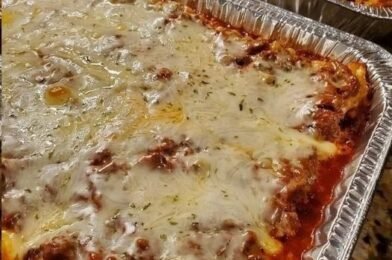Cuando se trata de comidas familiares, encontrar un plato que todos puedan disfrutar suele ser un desafío. Pero, ¿qué pasaría si te dijéramos que hay una receta que no solo es deliciosa, sino también nutritiva? Te presentamos nuestra emocionante versión de avena y calabacín, un plato que hace que nuestra familia salte de alegría. En este artículo, te guiaremos a través de los sencillos pasos para preparar esta delicia deliciosa y te explicaremos por qué es una mejor opción que tu noche de pizza habitual. ¡Prepárate para deleitar tu paladar y hacer que tu familia esté entusiasmada con la hora de la comida!
Los ingredientes que necesitarás
Antes de sumergirnos en el proceso de preparación, echemos un vistazo a los ingredientes que necesitarás para preparar este delicioso plato:
1 Calabacín: Una verdura versátil y baja en calorías que forma la base de nuestra receta.
Sal: Para realzar el sabor y ayudar a drenar el exceso de humedad del calabacín.
3-4 cucharadas de avena: Un cereal integral saludable que aporta textura y fibra.
100 g de queso rallado: Proporciona esa irresistible bondad del queso.
2 huevos: Un agente aglutinante que mantiene todo unido.
Pimienta al gusto: Agrega un toque picante y sabor.
Cebolletas: Hierbas frescas para una explosión de color y sabor.
Preparación del plato
Ahora que tenemos nuestros ingredientes listos, pasemos al proceso paso a paso de elaboración de este delicioso plato de avena y calabacín:
Ralla el calabacín y colócalo en un colador.
Espolvorea un poco de sal sobre el calabacín rallado y déjalo reposar durante unos 10 minutos. Esto ayudará a que el calabacín escurra el exceso de jugo.
Después de 10 minutos, exprime bien el calabacín rallado para eliminar la mayor cantidad posible de jugo restante.
Paso 2: Mezclar los ingredientes
En un tazón, combine el calabacín escurrido, la avena, el queso rallado, los huevos, la pimienta y el cebollino picado.
Mezcla bien todos los ingredientes hasta que estén bien combinados. Notarás que la mezcla se va uniendo para formar una deliciosa mezcla con queso.
Paso 3: Hornear a la perfección
Precaliente el horno a 180°C (360°F).
Vierta la mezcla de calabacín en una fuente para horno, distribuyéndola uniformemente.
Coloque el plato en el horno precalentado y hornee durante 20 minutos hasta que la parte superior esté dorada y el interior esté cocido a la perfección.
Después de 20 minutos, saca el recipiente del horno, destapa y vuelve a colocarlo en el horno durante otros 10 minutos para asegurarte de que la parte superior esté bien dorada y crujiente.










